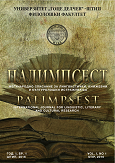APPROACHES AND ACTIVITIES FOR INTEGRATING VOCABULARY IN LANGUAGE INSTRUCTION
DOI:
https://doi.org/10.46763/palim2090225dAbstract
Acquiring a large number of words necessary for using the language in various situations is one of the biggest obstacles that learners face in the process of language learning. On the other hand, vocabulary is the key component of the overall communicative competence. Research shows that learners need to know at least 3.000 word families in order to be able to use the language successfully and to read authentic text. This implies that vocabulary learning should be done in an organized and principled way, taking into account the insights and the results from vocabulary acquisition research. The focus of this paper are the approaches and activities that can be used in the classroom in order to provide opportunities for successful acquisition of the vocabulary of the target language.
Keywords: vocabulary, acquisition, approaches, activities.


